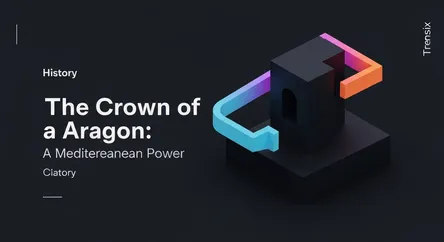History
The Crown of Aragon: A Mediterranean Power

Explore the Crown of Aragon, a medieval composite monarchy and maritime powerhouse that dominated the Mediterranean for centuries.
What is it?
The Crown of Aragon was a composite monarchy in the Iberian Peninsula and the Mediterranean, existing from 1162 to 1716. It originated from the dynastic union of the Kingdom of Aragon and the County of Barcelona. This was not a unified state but a confederation of separate territories—including the kingdoms of Valencia, Majorca, Sicily, Naples, and Sardinia—each retaining its own laws and institutions under a single monarch. At its zenith, it was a formidable thalassocracy (maritime empire), controlling vast trade routes and territories across the Mediterranean.
Why is it trending?
The history of the Crown of Aragon is a subject of continuous historical and political interest, particularly within modern Spain. Its structure as a decentralized union of diverse territories sparks discussions about federalism and regional identities, especially in Catalonia. The legacy of its institutions, laws, and maritime influence provides a rich field for historical research and debate. The complex relationship between its constituent parts, like the Kingdom of Aragon and the Principality of Catalonia, continues to be analyzed to understand the formation of Spain.
How does it affect people?
The Crown of Aragon profoundly shaped the political, cultural, and linguistic landscape of the Western Mediterranean. Its legacy is visible today in the distinct regional identities of Aragon, Catalonia, Valencia, and the Balearic Islands in Spain. The union of the Crown of Aragon with the Crown of Castile through the marriage of Ferdinand II of Aragon and Isabella I of Castile in 1469 laid the foundation for the modern Kingdom of Spain. Its eventual dissolution through the Nueva Planta decrees after the War of the Spanish Succession centralized power, an event whose historical implications still resonate in contemporary Spanish politics.